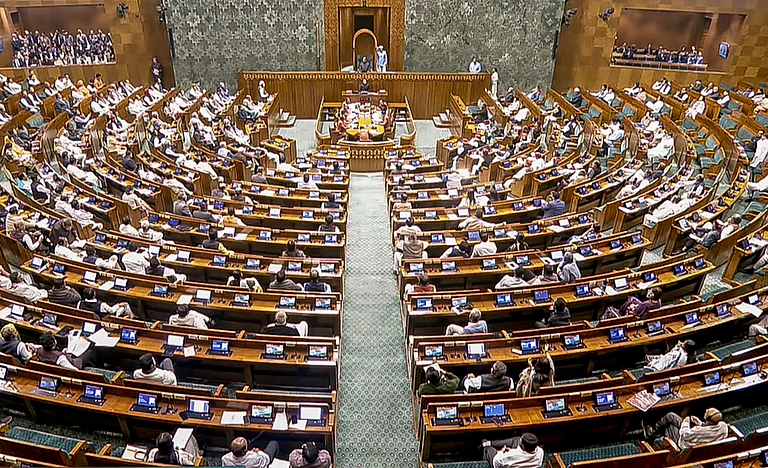The higher education sector in India has experienced significant growth in recent decades. The country’s educational landscape has expanded significantly, with the establishment of numerous universities and colleges surpassing the limited number of previous elite institutions. Nevertheless, this expansion entails advantages as well as disadvantages. Although it has increased the availability of higher education, it has also resulted in the proliferation of numerous low-quality institutions that contribute minimally to improving students’ abilities and job prospects. Within this framework, university rankings have emerged as an essential instrument for students such as yourself to navigate the intricate realm of higher education effectively.
India possesses an expansive higher education system, boasting a staggering number of 1,000 universities and 40,000 colleges, making it one of the largest in the world. The expansion was motivated by the necessity to cater to a burgeoning youth population and the aspiration to establish itself as a worldwide center of knowledge. Notwithstanding this expansion, numerous establishments encounter difficulties in upholding quality benchmarks. Specific colleges and universities provide obsolete programs, inadequate infrastructure, and faculty members who lack the necessary qualifications. Consequently, individuals who have completed their studies at these educational establishments frequently encounter difficulties securing employment and are deficient in their abilities to thrive in the current highly competitive job market.
To ensure optimal educational outcomes, it is crucial to employ mechanisms that facilitate the identification of the most superior educational institutions, considering the significant variation in the quality of education they offer. University rankings play a crucial role in this context. Rankings offer a comparative evaluation of institutions, considering different criteria, to provide a quick overview of their strengths and weaknesses. These rankings serve as a valuable resource for students to make well-informed decisions regarding their choice of higher education institution.
To grasp the significance of rankings, examining the comprehensive framework that forms their foundation is necessary. Universities are typically evaluated based on several critical criteria.
Academic Reputation is a crucial aspect that includes the excellence of faculty members, the productivity of research, and the robustness of subjects offered. An institution’s academic standing is significantly influenced by its faculty’s qualifications, research output, and impact. The number of publications, citations, and research grants reflects the institution’s research capabilities. At the same time, the reputation and strength of specific departments or programs indicate areas of excellence within the institution.
To ensure optimal educational outcomes, it is crucial to employ mechanisms that facilitate the identification of the most superior educational institutions, considering the significant variation in the quality of education they offer
The student-to-faculty ratio is a significant factor to consider. Reduced class sizes frequently correlate with increased individualized attention and improved educational achievements. In addition, the student-to-faculty ratio helps evaluate faculty members’ ease of access and availability for mentoring and support.
Student Outcomes are crucial metrics that reflect an institution’s effectiveness. The graduation and employment rates serve as indicators of the institution’s effectiveness in equipping students for the job market. The accomplishments and professional roles held by former students in their respective areas of expertise offer valuable insight into the enduring influence of the institution’s educational program.
The evaluation of Research and Development is based on criteria such as research funding, innovation and patents, and the availability of research facilities. The level of funding allocated to research projects serves as an indicator of the institution’s research prowess. The number of patents submitted and innovations created serve as a measure of the institution’s impact on technological and scientific progress. The presence and excellence of research labs, libraries, and other facilities support the institution’s research endeavors.
Infrastructure and Resources encompass the physical structures and resources available on campus as well as the technological tools and support services provided. The quality of classrooms, labs, libraries, and recreational facilities influences the overall learning environment. Modern education relies heavily on access to current technology and online resources. Career services, counseling, and academic support services are essential for ensuring students achieve success.
The internationalization assessment is based on the presence of international faculty, international students, and global partnerships. The presence of international faculty members contributes to the institution’s diversity and global outlook. The proportion of international students reflects the institution’s worldwide attractiveness and multiculturalism. Partnerships and reciprocal initiatives with international institutions enrich the educational experience and broaden the opportunities available to students.
Evaluations of diversity and inclusion consider factors such as gender ratio, socioeconomic diversity, and support for underrepresented groups. An equitable distribution of male and female students and faculty fosters an inclusive atmosphere. Ensuring equal opportunities is achieved by including students from diverse socioeconomic backgrounds. The institution’s dedication to diversity and inclusion is demonstrated through its implementation of programs and policies catering to minorities and disadvantaged groups.
Academic Reputation is a crucial aspect that includes the excellence of faculty members, the productivity of research, and the robustness of subjects offered. An institution’s academic standing is significantly influenced by its faculty’s qualifications, research output, and impact
Sustainability and Social Responsibility encompass environmental initiatives, community engagement, and ethical practices. The institution’s commitment to environmental responsibility is evident through its efforts to promote sustainability on campus. The institution’s commitment to social responsibility is demonstrated through its active participation in local community development and social projects. Compliance with ethical principles in governance and operations guarantees openness and honesty.
Student Satisfaction is assessed by analyzing survey data and evaluating retention rates. Feedback from both current and past students can provide insights into the institution’s experience and satisfaction. The retention rate of students after the first year serves as an indicator of the excellence of the academic and social milieu.
The Financial Aspects encompass the costs of tuition fees, the availability of financial aid, and the potential return on investment. The expense of education and the accessibility of scholarships impact the affordability of obtaining an education. Financial aid programs guarantee that students from various socio-economic backgrounds have the opportunity to pursue higher education. Evaluating the expenses associated with education in relation to the potential income one can earn after completing their studies aids in determining the worth of investing in education.
University rankings significantly impact students and their families’ decisions. Rankings offer a definitive and organized evaluation of various institutions, assisting students in making well-informed choices regarding where to apply and enroll. Rankings facilitate the selection of universities that match students’ academic interests, career objectives, and personal preferences by assessing the merits and drawbacks of each institution.
Institutions rely on rankings as a standard for evaluating their performance. Universities endeavor to enhance their rankings by improving their academic programs, research output, and infrastructure. Pursuing enhancement is advantageous for students, as it results in superior educational opportunities and resources.
The student-to-faculty ratio is a significant factor to consider. Reduced class sizes frequently correlate with increased individualized attention and improved educational achievements
Attaining high rankings elevates universities’ worldwide acknowledgment and prestige. Attending a prestigious institution can give students access to global career prospects and partnerships. Furthermore, it enhances their academic credentials, increasing their competitiveness in the job market.
Rankings enhance transparency and foster accountability in higher education. Institutions are urged to uphold elevated levels of quality and performance as they undergo regular evaluations and comparisons with their counterparts. This guarantees that students obtain a top-notch education and get their money’s worth.
Employers frequently rely on university rankings as a benchmark when hiring graduates. A degree from a prestigious institution can provide students with a competitive advantage in the job market, as it demonstrates a specific level of academic superiority and readiness. Rankings assist employers in identifying institutions that produce highly skilled and competent graduates.
Institutions are motivated to establish fair and inclusive environments when rankings consider diversity and inclusion criteria. This enhances the educational experience for students by cultivating a varied and dynamic campus community where a range of viewpoints and life experiences are highly regarded and treated with esteem.
Ultimately, university rankings serve as a crucial instrument for students navigating the intricate terrain of higher education. They offer a thorough evaluation of institutions based on multiple criteria, assisting students in making well-informed decisions about where to pursue their studies. Rankings enhance transparency, foster accountability, and facilitate ongoing enhancement in higher education, guaranteeing that students obtain a top-notch education. Rankings allow students to assess the merits and drawbacks of various institutions, enabling them to select universities that align most effectively with their academic and professional goals. With the ongoing expansion of the Indian higher education system, the significance of dependable and thorough university rankings will inevitably increase. These rankings serve as a valuable tool for students in selecting institutions that genuinely enhance their educational experience.
Methodology
Our ranking methodology evaluates Higher Education Institutions (HEIs) based on five core criteria: Academic and Research Excellence, Industry Interface and Placements, Infrastructure & Facilities, Governance & Admissions, and Diversity & Outreach. Each broad parameter is further broken down into sub-parameters and indicators, each carrying a specific weightage.
To ensure fairness and accuracy, we employ a multi-faceted data collection approach. We gather ranking data through comprehensive surveys involving various stakeholders, including students, faculty, and others associated with the HEIs. Additionally, we meticulously vet the data by cross-referencing it with evidence and reliable third-party sources.
In cases where direct data may be limited, we resort to trusted and authoritative sources like AISHE, NAAC, NIRF, etc., to supplement the information. This ensures that our ranking process maintains its integrity and impartiality.
The data we collect is normalised to standardise scores across different parameters. This normalisation enables a fair comparison of institutions, regardless of their size or other factors that could influence raw scores. After normalisation, the scores for each measure are weighted appropriately, culminating in a final overall score on a scale of 1000.
We take great pride in our methodology, which results from extensive research and continuous refinement. We remain committed to improving our approach by actively seeking user feedback, engaging in discussions with academic leaders and higher education experts, conducting literature reviews, and analysing trends in our data. Moreover, we stay vigilant about incorporating new and relevant data while collaborating with vice-chancellors, deans, researchers, academicians, and prominent educationists to stay at the forefront of developments in the education landscape.
With this comprehensive and evolving approach, our ranking system aims to provide a reliable and up-to-date assessment of Higher Education Institutions, empowering stakeholders to make informed decisions and fostering continuous growth in the academic community.
MORE FROM THIS ISSUE
Dr Karthick Sridhar, Vice Chairman, ICARE
































